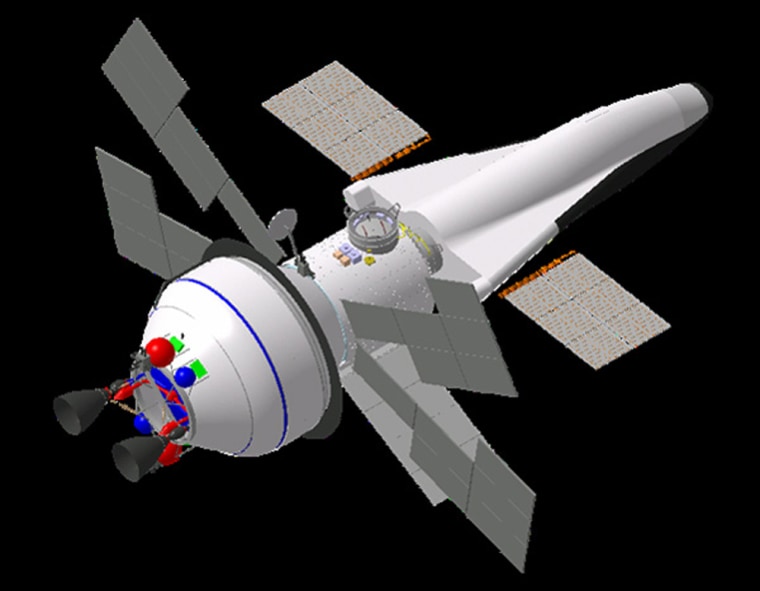The future of human space transportation, not only into Earth orbit, but also back to the moon and on to Mars, kick-started this week as NASA received contractor proposals for the Crew Exploration Vehicle.
A glimpse into one concept — provided by Lockheed Martin Space Systems near Denver — shows a lifting body craft that can be outfitted for lunar as well as Mars operations.
“Basically what we came down on was the side of safety for the crew in making our decision to go with a lifting body,” said Patrick McKenzie, CEV business development manager at Lockheed Martin Space Systems Co.
Additionally, the design of the basic vehicle would allow it to be utilized to support near-term human expeditions to the moon, as well as Mars in the future, McKenzie told Space.com in a phone interview.
Lifting-body approach
McKenzie said the lifting-body design was preferred over a capsule for several reasons.
For one, that approach allows more cross-range maneuverability; thus the craft can touch down on land versus water. Secondly, a lifting body can lessen the G-loads on crews returning from long-duration space stints, McKenzie said.
Whether they are lengthy stays in Earth orbit, a prolonged mission on the moon, or the round-trip trauma on the human body from a Mars mission, the lifting-body approach helps to minimize the G-forces on crew members, McKenzie noted.
Titanium shell
As part of a flight test program, McKenzie said that an unpiloted, full-scale version of the front-end of the company’s CEV design — a rescue module — would be flown to verify the safety elements of getting a crew back under a wide range of circumstances. That would take place in 2008.
One feature of the CEV design from the Lockheed Martin-led team is the use of a titanium shell, along with two layers of thermal protection materials.
“Even in the highly unlikely circumstance that you might have a burn-through of the outer thermal protection system, the crew compartment inside would maintain its integrity, and that burn-through would not end up being a fatal situation for the crew,” McKenzie said.
Ready for Mars?
McKenzie emphasized that the first mission for a CEV is returning to low Earth orbit. “But it makes sense to make sure that the vehicle that you’re developing this first go-round is going to be lunar-capable,” he added, with the firm’s engineers also looking into how the concept could be made Mars-ready.

“We’re attempting to the best extent possible to build in modularity into our systems and maintainability and ease of operations … so as new technologies and new capabilities are developed over the next 10 to 15 to 20 years, we’ll be able to take advantage of those without having to totally redesign a new vehicle,” McKenzie said.
McKenzie said that Lockheed Martin stands ready to work with NASA to help realize an objective stated by incoming NASA chief Michael Griffin — to try to close the gap between shutdown of the shuttle in 2010 and the scheduled start of operations for a piloted CEV in 2014.
Furthermore, use of the CEV to support the international space station is on the table.
“Our CEV will certainly be capable of servicing station,” McKenzie stated, but the company’s proposal did not address that use as a top requirement. This prospect would receive a thorough look early in the execution of a CEV program if the firm is selected, he said.
NASA has announced in the past the plan to award two teams CEV work this September.
